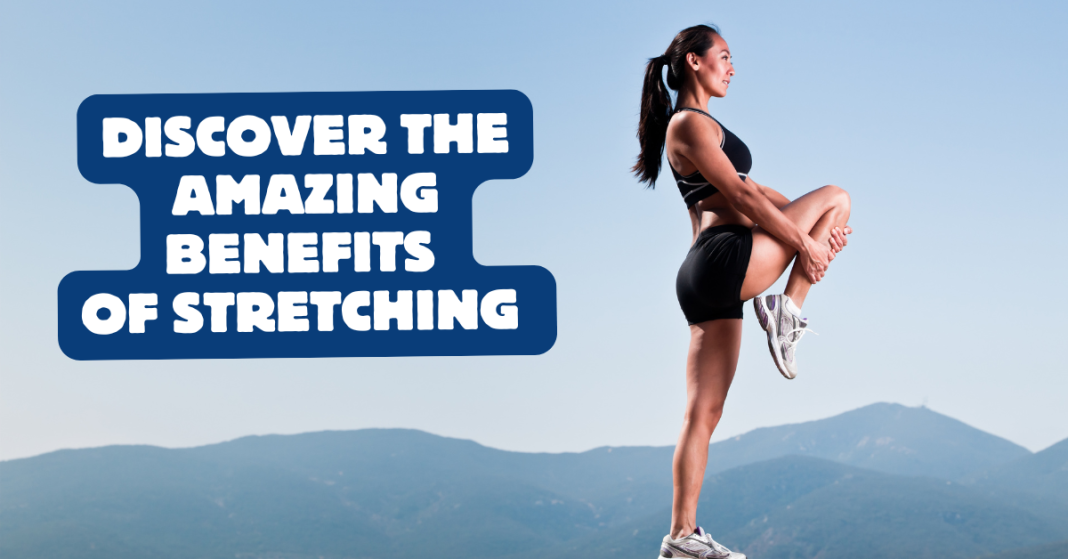Table of Contents
Stretching is one of those activities that many people overlook or skip during their workout routines. However, it’s a simple yet powerful practice that can bring numerous benefits to your body and mind. Whether you’re an athlete, a weekend warrior, or someone just starting their fitness journey, incorporating regular stretching into your daily routine can significantly improve your overall well-being.
In this article, we’ll explore the amazing benefits of stretching and explain why it should be an essential part of your lifestyle. We’ll also provide practical tips on how to make stretching a habit that you enjoy and look forward to.
1. Increased Flexibility and Range of Motion
One of the most obvious and well-known benefits of stretching is improved flexibility. Flexibility is crucial for maintaining a full range of motion in your joints, which is essential for performing everyday tasks with ease. Whether you’re bending down to tie your shoes or reaching for something on a high shelf, flexibility plays a key role in your ability to move comfortably and efficiently.
Tip: Regularly stretching your muscles can help elongate them, making them more pliable and less prone to injury. This is particularly important as we age since muscles naturally lose some elasticity over time.
2. Improved Posture
In today’s world, many of us spend hours sitting at desks, staring at screens, or driving, all of which can lead to poor posture. Over time, this can cause muscle imbalances, pain, and discomfort, particularly in the neck, shoulders, and lower back. Stretching can help counteract these effects by lengthening tight muscles and promoting proper alignment.
Tip: Focus on stretching your chest, shoulders, and hip flexors to help open up your body and reduce the risk of slouching. Improved posture not only makes you look taller and more confident but also reduces the likelihood of developing chronic pain.
3. Enhanced Athletic Performance
Stretching isn’t just for cooling down after a workout—it can also enhance your athletic performance. By increasing your flexibility and range of motion, stretching helps you move more freely and with greater agility. This can be particularly beneficial for sports that require a lot of movement, such as basketball, tennis, or running.
Tip: Incorporate dynamic stretches into your warm-up routine before engaging in physical activity. Dynamic stretching involves moving parts of your body through a full range of motion, which can help prepare your muscles and joints for the demands of your workout.
4. Reduced Risk of Injury
One of the most compelling reasons to stretch regularly is its role in injury prevention. Tight muscles are more susceptible to strains, pulls, and tears, especially during physical activity. Stretching helps to keep your muscles flexible, strong, and healthy, reducing the risk of injuries.
Tip: Make stretching a regular part of your fitness routine, particularly after workouts when your muscles are warm and more pliable. Focus on areas of the body that are prone to tightness, such as the hamstrings, calves, and lower back.
5. Stress Relief and Relaxation
Stretching isn’t just good for your body—it’s also great for your mind. When you stretch, your body releases tension and helps reduce stress levels. Stretching can also stimulate the release of endorphins, which are natural mood boosters that promote feelings of relaxation and well-being.
Tip: Incorporate stretching into your daily routine as a form of self-care. Spend a few minutes each day stretching in a quiet space, focusing on deep breathing and mindful movement. This can help you unwind after a long day and improve your overall mental health.
6. Improved Circulation
Stretching can improve blood flow to your muscles, which is essential for overall health and recovery. When you stretch, you encourage blood to circulate more efficiently throughout your body, delivering oxygen and nutrients to your muscles and removing waste products like lactic acid. This improved circulation can help speed up recovery after a workout and reduce muscle soreness.
Tip: Incorporate stretches that target major muscle groups, such as your legs, back, and shoulders, to enhance circulation throughout your entire body. For example, try incorporating leg stretches like hamstring and quad stretches to promote blood flow to your lower body.

7. Better Balance and Coordination
As we age, our balance and coordination can decline, increasing the risk of falls and injuries. Regular stretching helps maintain and even improve your balance and coordination by promoting muscle control and stability. This is especially important for older adults, but it’s beneficial for everyone, regardless of age.
Tip: Incorporate balance-focused stretches, such as standing on one leg while performing stretches, to challenge your stability and coordination. Yoga is also an excellent practice that combines stretching with balance and mindfulness.
8. Enhanced Recovery After Exercise
After a tough workout, your muscles can become tight and sore. Stretching helps to alleviate this discomfort by relaxing the muscles and promoting faster recovery. By stretching after exercise, you can help reduce the severity of post-workout muscle soreness and improve your overall recovery time.
Tip: Focus on static stretching after your workouts, holding each stretch for 15-30 seconds to allow your muscles to fully relax and recover. Pay extra attention to any areas that feel particularly tight or sore.
9. Increased Energy Levels
Stretching can also help boost your energy levels by increasing blood flow and oxygen supply to your muscles. When you feel sluggish or fatigued, taking a few minutes to stretch can invigorate your body and mind, leaving you feeling more alert and focused.
Tip: Try starting your day with a brief stretching routine to wake up your body and get your blood flowing. This can help set a positive tone for the rest of the day, keeping you energized and ready to tackle whatever comes your way.
10. Greater Mind-Body Connection
Stretching promotes mindfulness and a greater connection between your mind and body. By focusing on your breath and the sensations in your muscles, you can develop a deeper awareness of how your body moves and feels. This mind-body connection can improve your overall well-being and enhance your enjoyment of physical activity.
Tip: Practice mindful stretching by paying close attention to how each stretch feels, focusing on your breathing, and moving with intention. This can turn your stretching routine into a meditative practice that benefits both your body and mind.
Make Stretching a Daily Habit
Stretching is a simple yet incredibly powerful practice that offers numerous benefits for your body and mind. From increased flexibility and improved posture to reduced stress and enhanced recovery, the advantages of regular stretching are undeniable. By making stretching a daily habit, you can enjoy these benefits and more, helping you feel better, move better, and live better.
At Paphos Personal Training, we believe in the power of stretching as part of a comprehensive fitness plan. Whether you’re looking to improve your flexibility, prevent injuries, or simply feel more relaxed and energized, our expert trainers can guide you through effective stretching routines tailored to your needs.
For additional guidance on effective stretching techniques, you can explore resources from the American Council on Exercise and the Mayo Clinic.






